The country’s long history and upheavals have deeply influenced Korean cuisine. Each dish carries a story, a mark of time. However, this country also has dishes that make people “fearful” just by hearing the name.
Chuseok is one of the most important holidays for Koreans, equivalent to Vietnam's Mid-Autumn Festival but with deeper cultural meanings. During these days, Koreans often enjoy typical dishes that not everyone knows.
Live Octopus - “The Bizarre Korean Food Foreigners Want to Try Most”
Live Octopus - Sannakji (산낙지) is a surprising and interesting dish, especially for foreign visitors who have the chance to enjoy it when coming to Korea. Sannakji is spread by word of mouth around the world and finally ranked first in the list of “Weird Korean Food that Foreigners Want to Try Most”.

Dishes that test the courage of diners
Sannakji is a live octopus that is cleaned and chopped, then drizzled with sesame oil, sprinkled with salt and roasted sesame seeds and eaten raw while its legs are still wriggling. This image may be horrifying to some people but the taste is very attractive because you can feel all the toughness, freshness and sweetness of the octopus when enjoying it raw.

The live octopus will be put into the diner's mouth while still struggling on the plate.
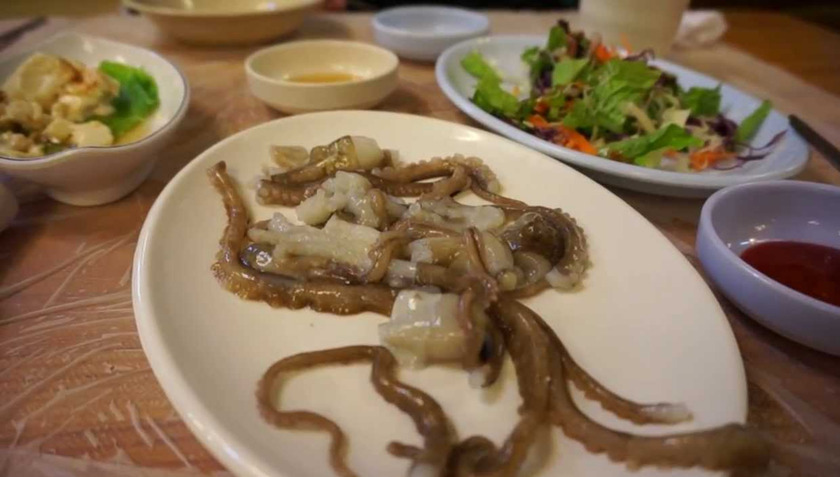
Scary Korean Specialties
However, it is important to note that the octopus's legs are still moving while you are eating them because many nerves are still active while the octopus is dead. Be careful to chew thoroughly when eating live octopus because the suckers on the octopus's legs can stick to the throat and mouth, causing a choking risk.
Raw beef is popular with the people of the land of kimchi.
If Germany has Crudos, France has Tartare or the famous Danish Tartarmad, then in Korea, people here honor Yukhoe as a masterpiece in this country's cuisine.
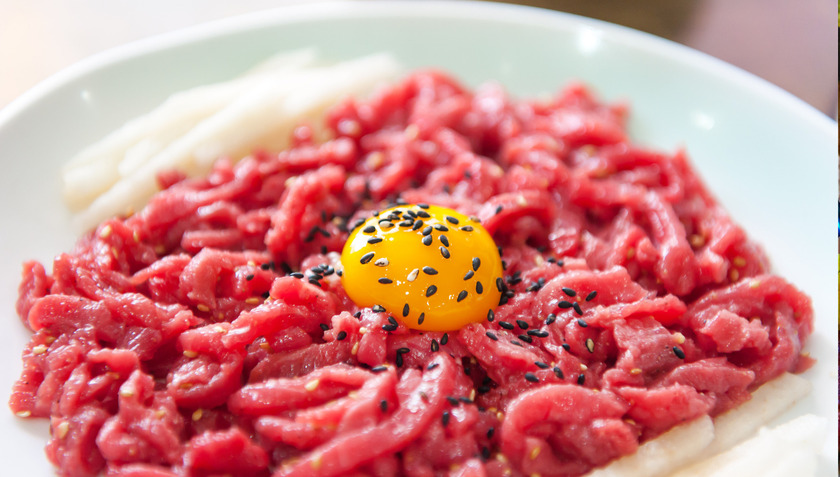
Not everyone dares to try Korean food
Yukhoe (육회) is also known as raw beef salad. Not as popular as spicy rice cakes, gimbap rice rolls or even kimchi. But very popular with Korean people. Considered a creative version originating from French cuisine Tartare. Yukhoe when coming to Asia has had new variations. Combined with many typical spices to make each piece of thin meat. Bringing a characteristic rich flavor and deliciousness that cannot be refused.
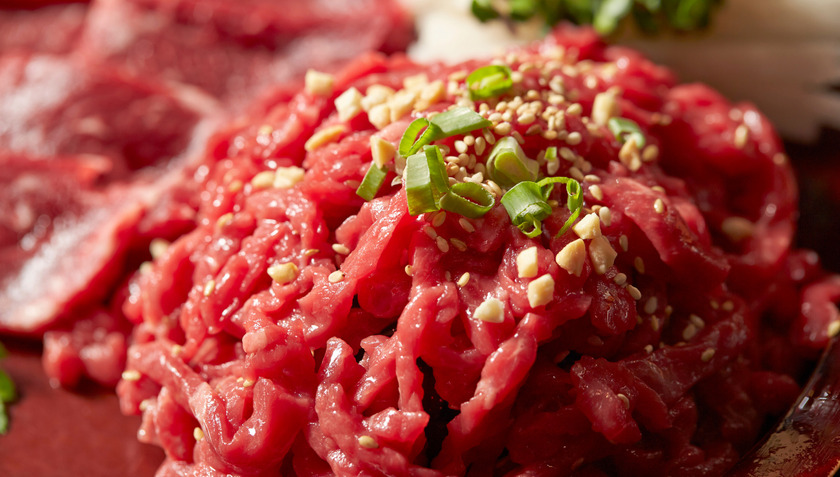
Yukhoe is a raw dish of Korean cuisine, usually made from raw beef with various spices and sauces.
The main ingredient of this attractive dish is of course beef. But the way Koreans choose the ingredients requires sophistication and meticulousness. Fresh beef retains its red color and juiciness without any fat. After cleaning, the meat will be minced or sliced very thinly. Then mixed with all kinds of typical Korean spices. Such as: soy sauce, sugar, salt, sesame oil, green onions, minced garlic, sesame seeds, pepper... Just like that, the raw beef salad gradually loses its fishy smell and is replaced by a new, strange and delicious taste that is hard to resist.

Considered as a creative version of French cuisine Tartare, Yukhoe has had new variations when it came to Asia.
Korean raw beef salad cannot be without thinly sliced pears. Pear is a sweet fruit that is popular in the land of kimchi. So it is not surprising that they use it as an ingredient for many dishes. With Yukhoe, each pear slice will be sliced and spread evenly on the plate. Place the raw meat underneath and eat like a salad. In addition, an indispensable part of the dish is the raw egg yolk placed on top. When eating, mix well to create a fatty, fragrant, and very unique flavor.
The haunting dish of raw horse meat
Added to the list of dishes for “thrill-seekers” only, this dish is often served on Jeju Island, where there is a long tradition of horse breeding. Mal-gogi is often served with condiments such as soy sauce, minced garlic, minced ginger, and sesame oil.
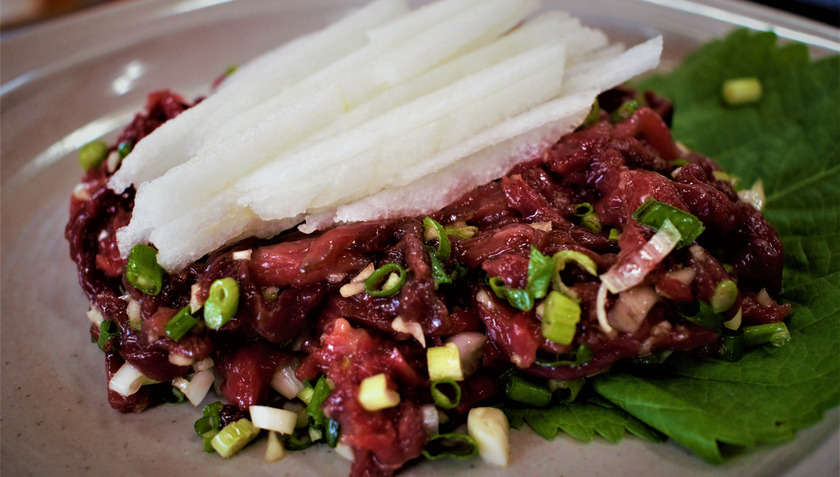
This dish is a specialty of the famous Jeju Island.
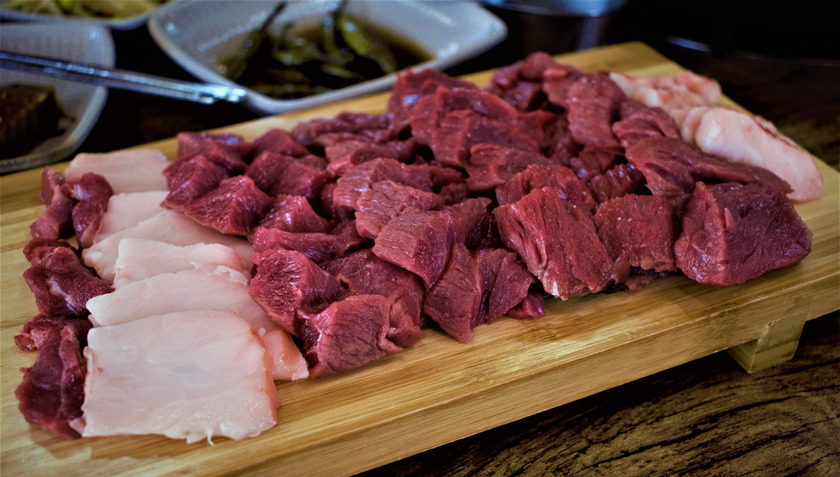
Fresh, succulent pieces of meat will be selected to serve diners.
Horse meat has many similarities with raw beef: juicy and sweet; however, horse meat has a richer taste than beef, even though it has only 1/3 the fat content. The common way to prepare raw horse meat is to slice it thinly and eat it raw, or mix it with spices and egg yolks. The people of Jeju Island have been eating horse meat for over 700 years. This dish is considered a specialty of Jeju Island.
Korea's smelly fermented stingray specialty
To make this dish, whole stingrays are marinated in straw for days. The result is a dish with a smell so strong that some diners compare it to a toilet. Hongeo-hoe has a distinctive chewy texture and a taste similar to raw fish. After eating, the strong ammonia taste will linger in the mouth and even on the diners’ clothes and hair.
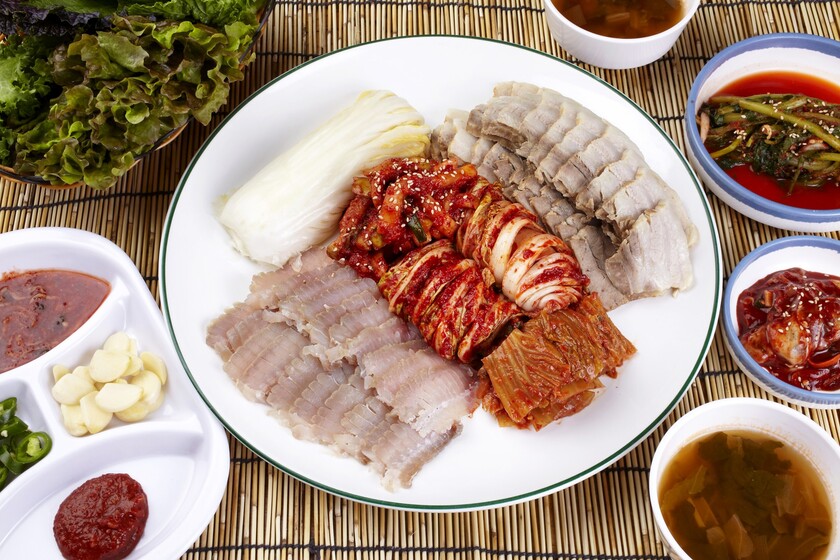
Just hearing the name of this dish makes many people run away.
This is a traditional specialty popular in South Jeolla Province, where hongeo-hoe is a precious dish, indispensable on the offering tray. It is quite expensive, 40,000 won (US$49) for imported fish and 80,000 won (US$98) for domestically caught fish.
Fermented skate is often eaten with boiled pork belly and kimchi. The meaty taste and the kimchi aroma help to mask the unpleasant smell and taste of hongeo-hoe. Soju also helps to reduce the unpleasant aftertaste of this dish.
The dishes are both a challenge and a "spice" to increase the excitement of the journey of discovery of Korea for adventurous diners. After looking through the menu, have you "spotted" which dish you will try first the next time you set foot in Korea?




































